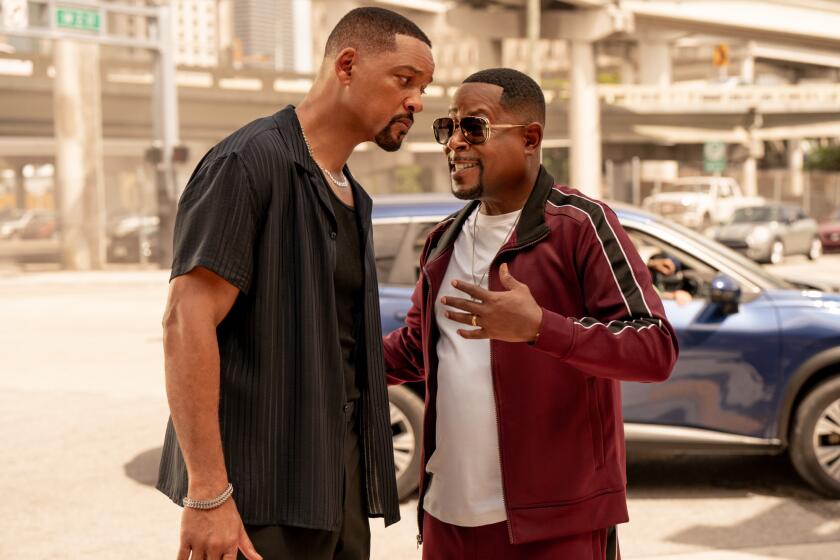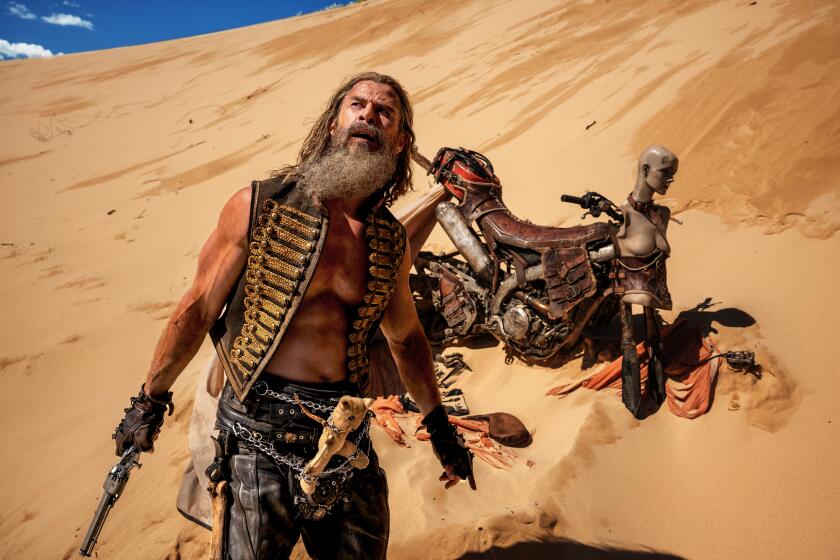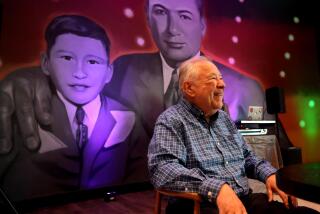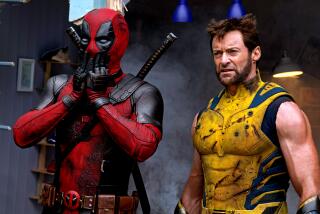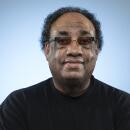News Analysis: ‘Bad Boys’ proves Black and Latino audiences could save Hollywood — if it lets them
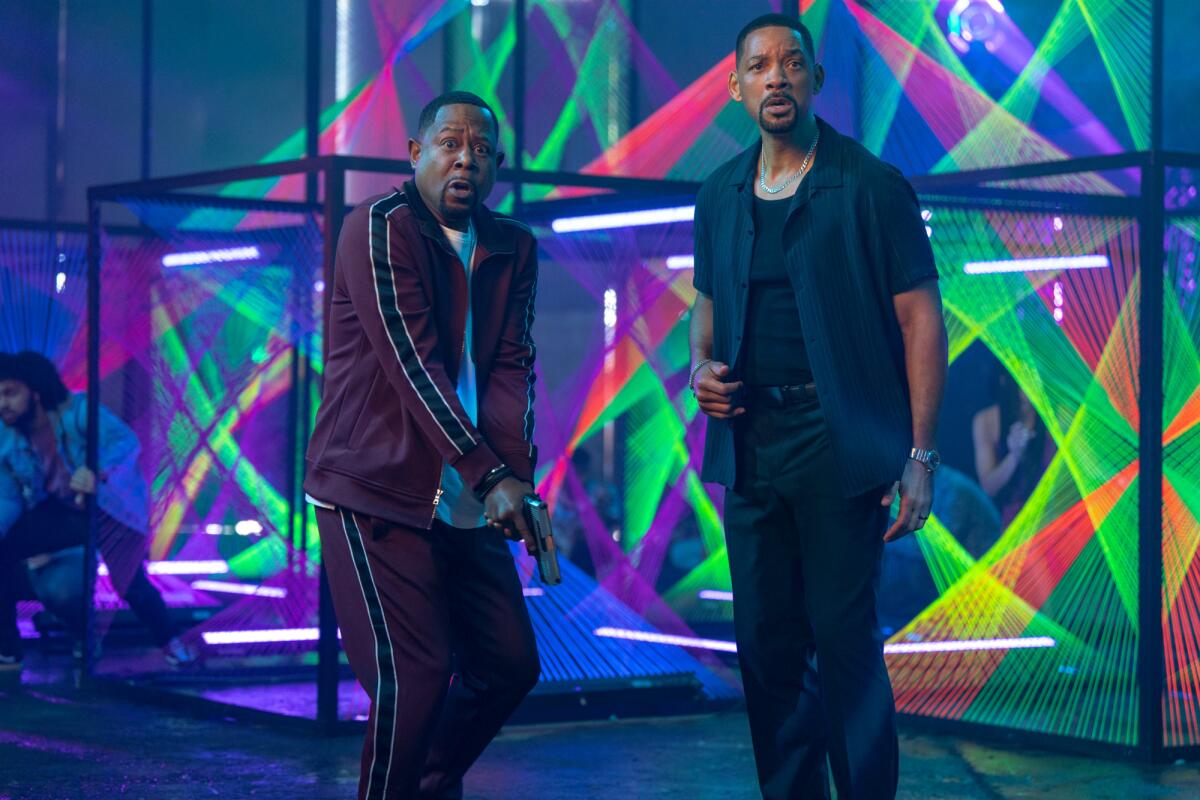
- Share via
Just over two years after Will Smith slapped Chris Rock across the face during the Academy Awards, he’s getting a robust pat on the back from moviegoers and Hollywood insiders alike.
Prompting a huge sigh of relief from exhibitors shaken by the lackluster start to the summer film season, this weekend’s $56-million domestic launch of “Bad Boys: Ride or Die,” reuniting Smith and costar Martin Lawrence for the fourth entry in the franchise, shows that audiences have put Smith’s shocking attack on Rock in the rear-view mirror.
But more important, the triumphant debut demonstrates the power of Black and Latino filmgoers, a demographic long overlooked and underserved by Hollywood — even as people of color make up the majority of opening weekend ticket sales for most top-performing movies.
Industry analysts report that 44% of the audience for “Bad Boys” was Black, while 26% was Hispanic and Latino, propelling the picture to a larger opening weekend than actioners “The Fall Guy” and “Furiosa: A Mad Max Saga.”
Although the film drew mixed reviews, with some critics calling it lazy and uninspired, its rousing reception by audiences of color shows that “Bad Boys: Ride or Die,” in which Smith and Martin reprise their respective roles as Miami police detectives Mike Lowery and Marcus Burnett, provided a healthy dollop of “comfort soul food” so often lacking in Hollywood’s tentpole fare: The film is culturally specific to its Black and Latino characters while also delivering the goods in its genre elements.
Will Smith’s ‘Bad Boys: Ride or Die’ tops the box office with a $53 million debut, marking his return to stardom post-Oscars controversy.
Smith has made a point of cultivating those audiences directly by taking films such as “Bad Boys” and “Emancipation” directly to them, and audiences have repaid that devotion in kind.
A video of the Oscar-winning actor’s surprise visit to the Cinemark Baldwin Hills Crenshaw multiplex, in a predominantly Black and Latino area of L.A., showed audience members laughing and cheering during the movie. Their excitement peaked upon discovering Smith walking among them after the screening, leading fans to swarm him for greetings and pictures.
Adil El Arbi and Bilall Fallah, the directing team that helmed “Bad Boys: Ride or Die” and its predecessor, 2020’s “Bad Boys for Life,” have taken and remixed the greatest hits that director Michael Bay established in the first two films.
Loud, foul-mouthed arguments between Lowery and Burnett? Check. Ear-shattering shootouts and fast-paced chases? Check. Showdowns with racists? Check. Lots of neon and fashionable clothes? Check. A performance of the earworm theme song (“Bad boys, bad boys, whatcha gonna do, whatcha gonna do when they come for you”)? Check.
The formula was also juiced by a few new water-cooler ingredients, including an in-joke in which Smith is slapped by Lawrence, clearly a reference to the Oscars . Fans were also delighted by the larger role for Reggie, a character introduced as a teen in “Bad Boys 2,” in which he’s interrogated by Lowery and Burnett after showing up to take Burnett’s daughter out on a date.
Now a Marine and Burnett’s son-in-law, Reggie — who is played by Dennis McDonald — has a number of breakout scenes in the new film, including one sequence in which he mows down several intruders breaking into Burnett’s house.
How Hollywood’s absurdly high expectations — on big-budget franchises, familiar IP, opening weekend and more — led to the current box office crisis.
But the foundation of “Bad Boys,” and its most enduring quality, remains the chemistry between Smith and Lawrence and — vanishingly rare among $100-million film franchises — their depiction of a loving relationship between two Black men who work together despite their considerable differences.
The industry’s hand-wringing over the box office disappointments of “The Fall Guy” and “Furiosa,” has cited any number of factors, including last year’s dual strikes, the rise of streaming and the the pressures of opening weekend. But the success of “Bad Boys: Ride or Die” suggests another, more fundamental issue. Hollywood would be wise to notice that there’s an audience craving stories that spotlight and celebrate cultural diversity while also appealing to fans of crowd-pleasing big-budget filmmaking.
It’s exactly the sort of “risk” that the first “Bad Boys” represented for producer Jerry Bruckheimer when it premiered in 1995, pairing two Black stars who had TV success — Smith with “The Fresh Prince of Bel-Air” and Lawrence with “Martin” — but were unproved on the big screen. Nearly three decades later, Hollywood is still re-learning the lesson that inclusive, diverse blockbusters aren’t a gamble but just good business.
As for Smith, the jury is still out as to whether he is still a box office draw outside of a well-established franchise. And not everyone is applauding. ESPN sports personality Stephen A. Smith contends that although the actor has apologized for his assault on Rock, he still has not explained the attack and owes the Black community “a conversation.”
For the moment, though, Will Smith has made a lot of film fans — and executives — slaphappy.
More to Read
Only good movies
Get the Indie Focus newsletter, Mark Olsen's weekly guide to the world of cinema.
You may occasionally receive promotional content from the Los Angeles Times.
